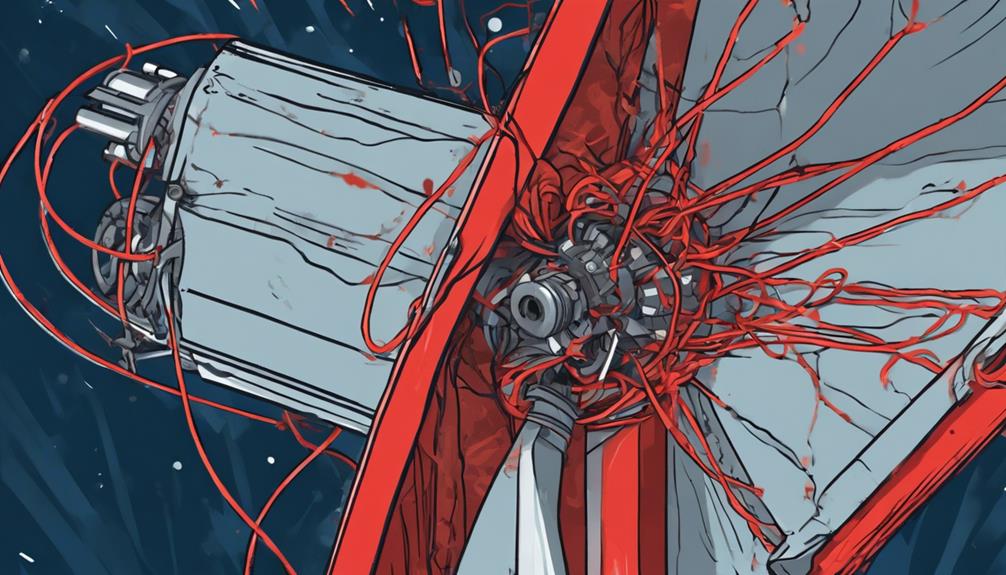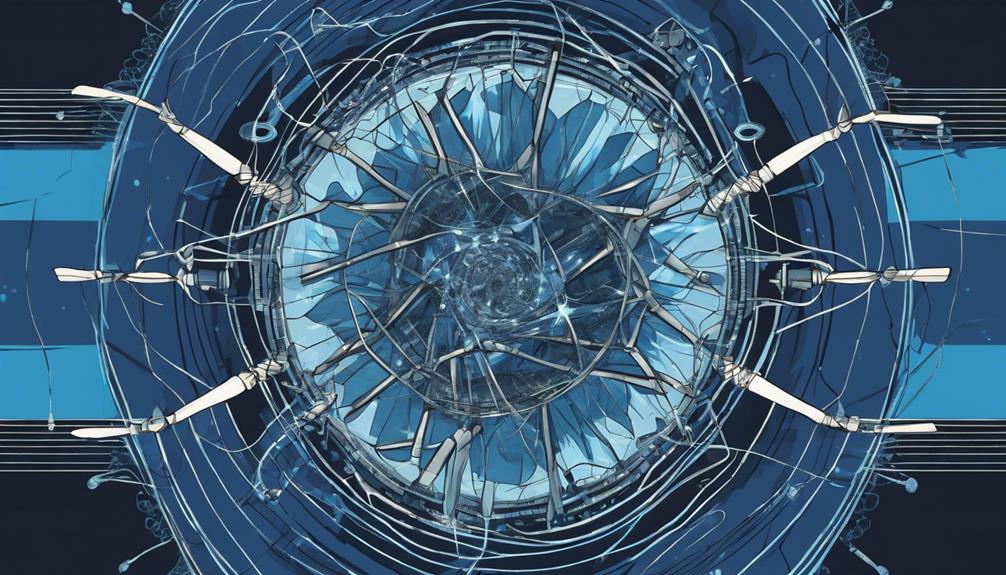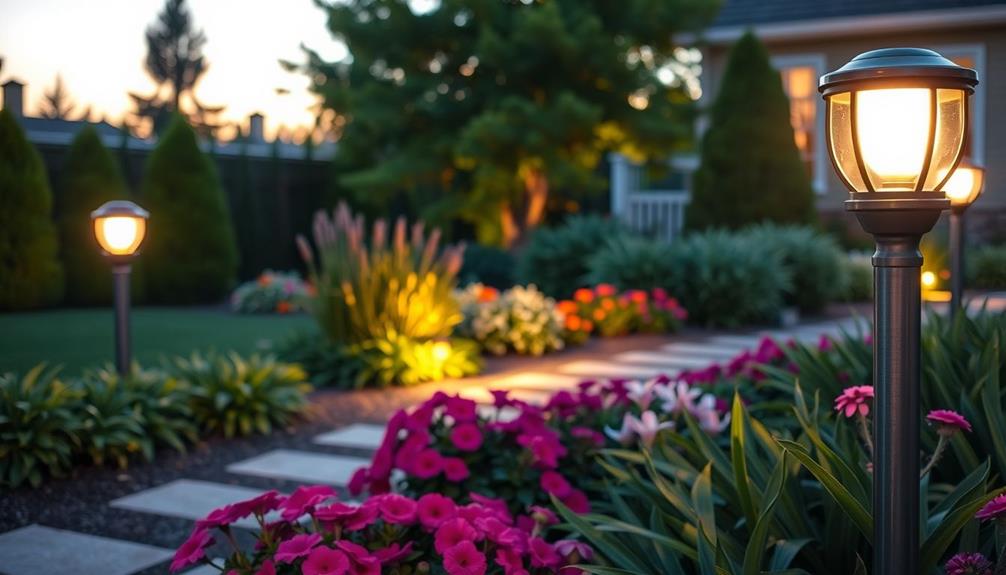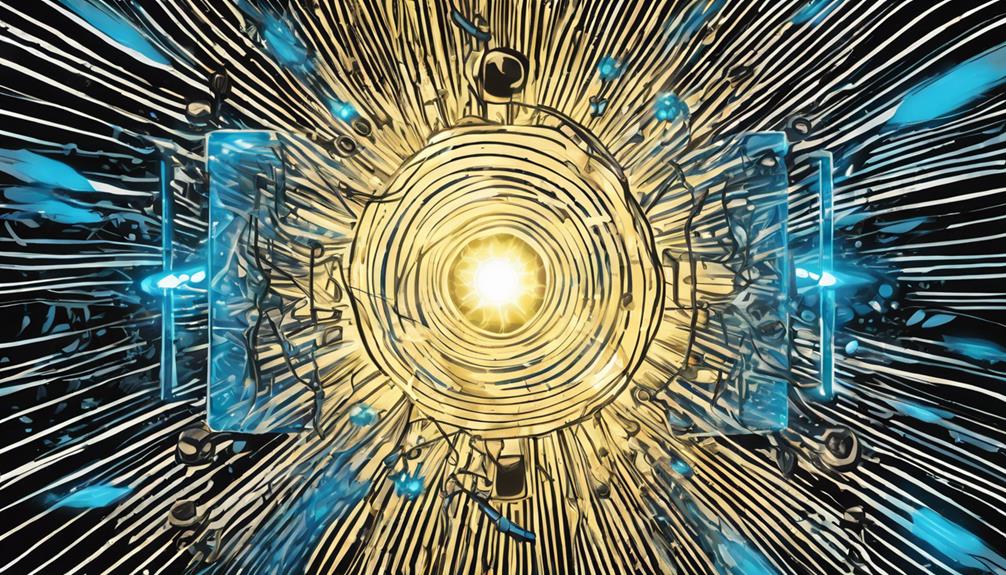When it comes to wind turbines, wiring is fundamental to maximizing energy output. I've learned that understanding electrical flow, circuitry, and safety protocols is essential to avoiding common issues like loose connections and improper grounding. Choosing the right components, like sturdy copper wire and secure connectors, is also critical. By following best practices for maintenance and troubleshooting, I can guarantee my wind turbine operates smoothly and efficiently. With proper wiring, I can generate up to 50% more electricity – and I'm excited to dive deeper into the details to optimize my system's performance.
Key Takeaways
- Understand electrical flow, circuitry, and safety protocols to ensure smooth operation and troubleshoot common issues.
- Choose sturdy, weatherproof wire and compatible connectors for reliable connections and consider surge protection for safeguarding against disturbances.
- Verify proper installation and functioning of the wind turbine, connecting it to the charge controller, battery bank, and inverter for safe and efficient energy transfer.
- Prioritize safety measures, including proper grounding, to protect from power surges and shocks, and follow manufacturer's instructions and local electrical codes.
- Regular maintenance checks, including inspecting for signs of wear and tear, loose connections, and damaged components, are crucial for maximizing efficiency and performance.
Understanding Wiring Fundamentals

When it comes to wind turbine wiring, understanding the basics of electrical flow, circuitry, and safety protocols is essential. This knowledge guarantees efficient and safe operation and helps in identifying and troubleshooting common issues for smooth and safe system operation.
A solid grasp of these fundamentals enables addressing typical wiring problems such as loose connections and improper grounding. Regular inspection and maintenance can easily resolve these issues. Proper grounding techniques help prevent electrical shock hazards and protect equipment from power surges.
With a strong foundation in wiring fundamentals, one can confidently tackle more complex aspects of wind turbine wiring to ensure top performance.
Choosing the Right Components

I select sturdy and weatherproof wire, like copper, to ensure my wind turbine system can withstand the harsh outdoor environment. This is essential for the electrical connections to remain secure and efficient, even in extreme weather conditions. Choosing compatible connectors and terminals is also crucial for secure connections. I make sure to install a fuse or circuit breaker to protect the system from overload or short circuits.
| Component | Considerations |
|---|---|
| Wire | Sturdy, weatherproof, copper or equivalent |
| Connectors | Compatible, secure, and weatherproof |
| Terminals | Compatible, secure, and weatherproof |
| Fuse/Circuit Breaker | Installed to protect from overload or short circuits |
| Surge Protection | Installed to safeguard against lightning strikes and disturbances
Connecting to Your Home System

Proper connection of the wind turbine to your home's electrical system is a critical step, requiring careful planning and execution to guarantee safe and efficient energy transfer.
I've learned that it's crucial to verify the wind turbine is installed and functioning correctly before connecting it to my home's electrical system.
Next, I connect the turbine's output wires to the charge controller, which regulates the electricity flow.
The charge controller is then linked to the battery bank, where excess electricity is stored.
Finally, I connect the inverter to the battery bank, converting DC power to AC power for household use.
Ensuring Safety and Compliance

Safety measures are paramount in wind turbine wiring, and I must prioritize them to protect myself and the system from power surges and electrical shock hazards.
Proper grounding is essential, involving the connection of metal components to the earth's surface to guarantee safe electrical flow. I must follow the manufacturer's instructions and local electrical codes for grounding to avoid any potential risks.
Additionally, I'll install surge protection devices to safeguard the system from lightning strikes and disturbances. These devices divert excess voltage to the ground, protecting sensitive components from damage.
Troubleshooting Common Issues

When issues arise, identifying and addressing common wiring problems, such as loose connections and improper grounding, is necessary to guarantee the efficient and safe operation of my wind turbine system. Regular inspection and maintenance are vital to preventing these issues from occurring in the first place. However, when problems do arise, I need to act promptly to troubleshoot and resolve them.
| Common Issues | Causes | Solutions |
|---|---|---|
| Loose Connections | Corrosion, wear and tear | Regularly inspect and tighten connections |
| Improper Grounding | Incorrect installation, lack of maintenance | Ensure appropriate grounding, follow manufacturer's instructions |
| Overheating | Poor wire sizing, inadequate cooling | Upgrade wire size, improve cooling systems |
| Electrical Shock | Improper insulation, faulty components | Replace faulty components, guarantee proper insulation |
Maximizing Efficiency and Performance

I optimize my wind turbine's performance by focusing on two critical components: grounding and surge protection, which are essential for maximizing energy output and preventing electrical hazards.
Proper grounding guarantees electrical shock hazards are minimized, and my equipment is shielded from lightning strikes. I make sure to adhere to manufacturers' instructions and local electrical codes for grounding.
Surge protection devices redirect excess voltage to the ground, safeguarding sensitive components. Routine inspections and maintenance of wiring connections help troubleshoot common issues like loose connections and damaged insulation.
Best Practices for Maintenance

Regularly setting up maintenance checks helps identify and address potential issues before they impact the wind turbine's performance.
As I inspect my wind turbine's wiring, I look for signs of wear and tear, such as frayed cables or corroded connections. I also check for loose connections, which can cause power loss and even electrical shocks.
I make certain to tighten any loose bolts or screws and replace damaged components to prevent further damage. Additionally, I clean the wiring and connectors to guarantee good electrical contact.
Frequently Asked Questions
Can I Use Existing Electrical Infrastructure for My Wind Turbine Installation?
'I'm wondering if I can use existing electrical infrastructure for my wind turbine installation. While it's tempting to reuse what's already there, I should guarantee compatibility and safety standards are met to avoid potential hazards.'
How Often Should I Inspect and Maintain My Wind Turbine Wiring System?
'Don't I want to guarantee my wind turbine system runs smoothly and safely? I should inspect and maintain my wiring system regularly, at least every 6 months, to prevent common issues like loose connections and damaged insulation.'
Are There Any Specific Certifications Required for Wind Turbine Wiring Technicians?
As a wind turbine wiring technician, I can assure you that specific certifications are required. In the US, for instance, the North American Board of Certified Energy Practitioners (NABCEP) certification is highly recommended.
Can I Connect Multiple Wind Turbines to a Single Electrical System?
Can I really optimize my renewable energy output by connecting multiple wind turbines to a single electrical system? Yes, I can, but it's essential to guarantee compatible wiring components and a properly sized electrical system to handle the increased power output.
What Is the Recommended Wire Gauge for a Residential Wind Turbine Installation?
"When it comes to residential wind turbine installations, I recommend using a wire gauge that can handle the system's voltage and current. Typically, a 2 AWG or 4 AWG copper wire is suitable for most residential setups."
What are the Key Wiring Techniques for the Future of Wind Turbines?
When it comes to the future of wind turbine technology, there are several key wiring techniques that are being developed to improve efficiency and reliability. These include advanced data communication systems, integrated power line communication, and advanced fault detection and monitoring. These innovations are set to enhance the performance of future wind turbine technology.
Conclusion
As I reflect on my journey to master wind turbine wiring, I'm reminded that a well-designed system can greatly impact performance.
Did you know that a single wind turbine can power up to 1,400 homes?
By following this guide, you'll be well on your way to harnessing the full potential of wind energy.
Remember, a thorough understanding of wiring fundamentals, component selection, and safety protocols is key to maximizing efficiency and performance.










